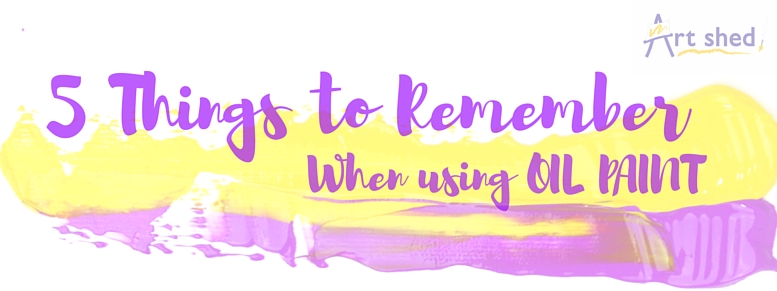5 Things to Remember When Using Oil Paints
Author: Tom Date Posted:20 July 2016

Every time you pick up a new medium, or try out a new type of paint it can be a bit overwhelming as there is so much to learn and remember about each type of paint or medium. And we are often told that if you don’t follow certain steps and rules you will ruin your painting, or it will fall off your canvas; this is honestly very difficult to do as modern paint technology is much more flexible than it once was, and I have also found the best way to learn for yourself is to deliberately make these mistakes.
However, the type of paint that is often seen to be the most daunting – oil paint – is actually very simple and in my opinion, it is the most forgiving paint of them all. If you are aware of these 5 pieces of information about oil paints they will hopefully make more sense to you.
Oil Paint does not actually dry, it Oxidises!
It is a common misconception that oil paint dries like many other things do, the idea that if they are left somewhere warm they will dry faster - This is not actually the case, as unlike water-based paints which evaporate when exposed to the air; when oil paint is exposed to the atmosphere, a reaction known as oxidisation occurs. Put simply, this reaction occurs when your oil paint is exposed to the air, and is a slow process that slowly sees the paint harden over time. This leads to the next tip!
Oil Paints require a lot of drying time.
The slow process of oxidisation (drying) of oil paint is one of the reasons it is so forgiving as a medium, the slow drying time allows you more time to blend and work areas of a painting. This is why many people use oils paints. It is worth noting though that when using oils depending on how thick areas are applied it may take weeks – months for the paint to fully harden. When working to a dead line you should consider this and apply thinner layers. And if the work requires texture, consider a base layer of a water-based impasto medium.
Some Colours (Pigments) take longer to dry that others.
Another thing to be aware of is that certain colours can take longer to dry that others, a particularly good example of this is Titanium white! You should get to know the pigments you use the most and how they may dry at different rates. If you need to speed up the drying time you can add a fast drying agent to the paint, such as Liquin.
Remember to apply paint ‘Fat over Lean.’
This process is the one that scare many people who are new to oils, in that if you do not apply the paint correctly your painting may crack – but the process is simple, and paint is quite flexible so it is best to not get too pedantic either.
Fat refers to thick layers, and lean accounts for thin layer – essentially your first few layers should be applied using thinner paint, allowing each layer to dry between coats to avoid have lower layers of paint drying at different rates to the top layers.
You should wait a few months to varnish.
Due to the slow rate that it takes for oils paints to fully harden, it is best to wait a few months before you apply a final varnish as to avoid cracking of the varnish.
If time is not on your side, I have had good results applying spray on retouch varnish over touch dry paintings in the past.







